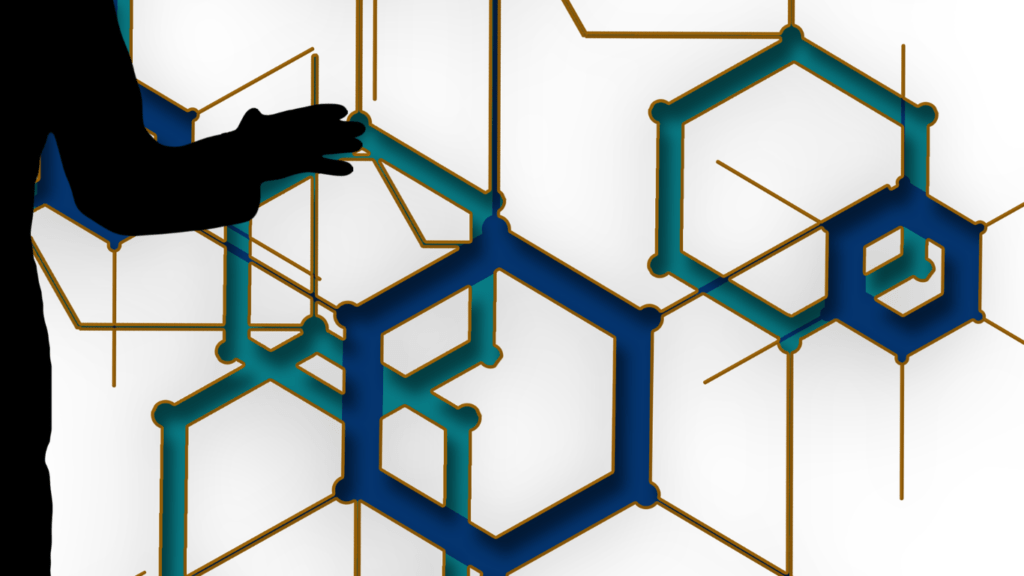Understanding Blockchain Technology
Blockchain technology offers a new way to ensure the veracity of art through its transparent and immutable ledger.
Basics of Blockchain
Blockchain is a decentralized digital ledger that records transactions across a network of computers. Each transaction, or “block,” links to the previous one, forming a “chain.”
This structure ensures that once information is recorded, it’s nearly impossible to alter without altering all subsequent blocks. For example, in art authentication, details about an artwork’s origin, ownership, and provenance can be securely stored.
How Blockchain Ensures Security
Blockchain secures data through cryptographic techniques and a consensus mechanism. Cryptography encrypts the data, making it accessible only to authorized parties.
The consensus mechanism, involving multiple network participants (nodes), verifies transactions before adding them to the ledger. This decentralized verification process prevents single points of failure and reduces the risk of fraud or tampering. Consequently, art collectors and galleries can trust the provenance records stored on the blockchain, ensuring the authenticity of the art they acquire.
The Current State of Art Authentication
Art authentication remains a critical issue in the art world. Despite advancements, several challenges still impede the process.
Challenges in Authenticating Art
Authenticating art involves several challenges due to the complexity and subjectivity of the process. Experts often face difficulties in verifying provenance, which includes a complete history of an artwork’s ownership. Forgeries, which have become increasingly sophisticated, further complicate the authentication process.
Additionally, inconsistent documentation and records hamper efforts to trace an artwork’s origins accurately. The high value of artworks also incentivizes fraud, making the stakes even higher for collectors and institutions.
Traditional Methods of Art Authentication
Traditional art authentication methods rely heavily on expert opinions and scientific analyses. Experts analyze stylistic elements, brushwork, materials, and historical context to attribute works to specific artists. Scientific techniques like:
- X-ray fluorescence
- carbon dating
- pigment analysis
help verify age and materials.
However, these methods have limitations due to their reliance on subjective interpretation and the potential for human error. Inconsistent records and the need for extensive historical documentation further complicate the verification process, often leaving room for dispute and uncertainty about an artwork’s authenticity.
Blockchain in Art Authentication
Blockchain’s role in art authentication hinges on its ability to create a secure and transparent ledger. This technology ensures each piece’s history and provenance remain unalterable.
How Blockchain Transforms Authentication Processes
Blockchain significantly transforms the authentication process by providing an immutable and transparent record. Each artwork gets a unique digital certificate recorded on the blockchain, offering verifiable proof of provenance. This reduces the reliance on subjective expert opinions and inconsistent documentation.
For instance, blockchain can track the entire lifespan of an artwork, from its creation to its current ownership. Digital certificates stored on the blockchain include details like artist identity, creation date, and transaction records. These certificates are immutable, ensuring tamper-proof records.
Moreover, blockchain integrates smart contracts that automate verification when transferring ownership. These smart contracts trigger upon meeting pre-defined conditions, ensuring all transactions align with the documented provenance.
Case Studies: Successful Blockchain Implementations
Several case studies highlight the successful implementation of blockchain in art authentication. One notable example is Verisart, which leverages blockchain to provide artists and collectors with digital certificates of authenticity. These certificates verify the creation and transaction history, thus deterring forgeries.
Another example is the collaboration between Codex Protocol and Artory. Codex Protocol’s decentralized registry allows users to document, track, and verify the provenance of their artworks. Artory, on the other hand, offers a secure and transparent ledger for documenting artwork details and ownership history.
Deloitte also showcases blockchain in art through its ARTtrac platform. This platform ensures artworks have a complete provenance history by recording information about artwork creation and subsequent transactions on the blockchain.
These examples showcase how blockchain addresses longstanding challenges in art authentication, providing enhanced security, transparency, and trust.
Benefits of Blockchain for Art Industry

Blockchain’s integration into the art world offers significant advantages. It revolutionizes the way authenticity and provenance are verified.
-
Increased Trust and Verification
Blockchain enhances trust in the art industry. By storing artwork data on an immutable ledger, it ensures that provenance records are tamper-proof. Each transaction gets recorded chronologically, building a verifiable history for each piece. Buyers and collectors gain confidence knowing that every record is accurate and unchangeable.
-
Reducing Fraud and Forgeries
Blockchain significantly reduces art fraud. Verified digital certificates of authenticity provide a secure method for confirming an artwork’s provenance. This method eliminates reliance on inconsistent expert opinions. Digitized records on the blockchain make it difficult for forgers to create plausible fake histories, deterring counterfeit activities.
Potential Drawbacks and Limitations
Although blockchain technology offers numerous advantages for art authentication, it also presents certain challenges and limitations.
Technological Challenges
Blockchain implementation isn’t straightforward. Issues like scalability, high energy consumption, and technical complexity make adoption challenging. Major blockchains, like Ethereum, consume significant power, raising environmental concerns.
Also, as the blockchain grows, scalability becomes a bottleneck, potentially slowing down transaction processing times. Integrating blockchain with existing art databases and digital archives demands specialized technical expertise, which could be a barrier for smaller institutions.
Acceptance Within the Art Community
Blockchain’s widespread adoption faces resistance within the art community. Many traditionalists hesitate to embrace digital solutions, preferring established methods of authentication.
Art dealers, collectors, and galleries may find digital certificates less tangible, impacting their trust. Additionally, the high costs associated with blockchain integration could deter smaller players from participating. Stakeholders in the art world require time and education to fully understand and trust this technology’s implications.
By addressing these constraints, blockchain technology can better fulfill its potential in revolutionizing art authentication.

 Anna Freehill, a key contributor to Avant Garde Artistry Hub, plays a vital role in shaping the platform’s vision. As an author and collaborator, she helps bridge the worlds of art and technology, offering insightful articles that guide artists through the rapidly evolving creative landscape. Anna’s dedication to highlighting art's therapeutic value has contributed to the platform’s focus on mental and emotional well-being through creative expression.
Her involvement in building Avant Garde Artistry Hub has been instrumental in providing valuable resources to artists seeking to enhance their careers. Whether through her writing on business strategies or her support in platform development, Anna is committed to fostering a space where artists can thrive and embrace the future of art.
Anna Freehill, a key contributor to Avant Garde Artistry Hub, plays a vital role in shaping the platform’s vision. As an author and collaborator, she helps bridge the worlds of art and technology, offering insightful articles that guide artists through the rapidly evolving creative landscape. Anna’s dedication to highlighting art's therapeutic value has contributed to the platform’s focus on mental and emotional well-being through creative expression.
Her involvement in building Avant Garde Artistry Hub has been instrumental in providing valuable resources to artists seeking to enhance their careers. Whether through her writing on business strategies or her support in platform development, Anna is committed to fostering a space where artists can thrive and embrace the future of art.